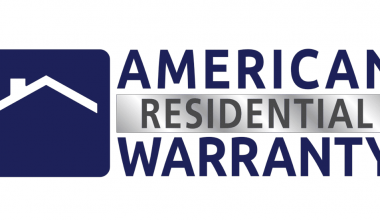A qualified charitable distribution is a straightforward withdrawal from an individual retirement arrangement (IRA) paid to an acceptable charity. We’ll be discussing the qualified charitable distribution in 2023, as well as the inherited IRA to 401k form and rules.
Qualified Charitable Distribution 2023
A Qualified Charitable Distribution (QCD) in 2023 is the direct transfer of cash from your IRA custodian to a qualified charity. If certain conditions are met, QCDs can be credited against your RMDs for the year, which can help you meet your financial goals.
Additionally, a Qualified Charitable Distribution in 2023(QCD) does not count as taxable income, unlike normal IRA withdrawals. Your Social Security and Medicare tax credits and deductions may be less affected if your taxable income is lower. Furthermore, QCDs don’t need you to categorize, which implies that you can reap the benefits of the greater standard deduction while still using a QCD for charitable donations because of recent tax legislative changes.
Conditions to make a QCD?
QCDs are available to many types of IRAs—Traditional, Rollover, Inherited, SEP (inactive plans only), and SIMPLE (inactive plans only)—but there are some conditions:
- To qualify for a QCD, you must be at least 70 years old and above.
- There is a cap on the amount that can be taxable using QCDs. Non-deductible contributions are not included here.
- In order to qualify for a QCD, an individual must earn at least $100,000 per year. QCDs given to one or more charitable causes in a calendar year count toward this total. (Nevertheless, if you and your spouse file joint taxes, your partner can make a QCD from his or her own IRA for up to $100,000 in the same tax year.)
- Your RMD from your IRA must be taken out by your RMD closing date, which is usually December 31 if you are taking a QCD.
- The amount of QCD that you can deduct may lead to a reduction if you make a contribution to an IRA. Amounts contributed to your IRA after the age of 70 1/2 are deductible and will decrease the amount of QCD that is excluded from your gross income.)
- Donations made in excess of your RMD are not applicable to a future year’s RMD.
- QCDs do not apply to distributions made directly to the IRA owner and then donated to charity.
- A QCD can be made from a Roth IRA in certain conditions. When it comes to Roth IRAs, you don’t have to worry about RMDs for the rest of your life. To find out if a QCD from a Roth is right for you, speak with a tax professional.
Qualified Charitable Distribution From Inherited IRA
There are specific differences between inherited IRAs and other IRA accounts. An IRA inherited from someone other than your spouse should be handled in the following manner:
#1. Consider your choices before making decisions on your inherited IRA.
Inheriting an individual retirement account (IRA) necessitates caution. Do not feel compelled to make a decision right away. If the IRA owner’s death has not already been reported to the IRA custodian, you will need to do so. In addition, you’ll want to make sure that the beneficiary account is properly set up. Make sure that the account is titled with you as the beneficiary of the dead IRA owner’s estate, as each custodian handles things slightly differently. In other words, there’s no money to be made off of this.
Make sure you want any distributions before accepting them. Changing your mind about distribution will result in tax repercussions. It is impossible to correct a distribution that is undesirable or unnecessary.
#2. Making Contributions to an IRA Inherited from a Loved One is not possible.
Contributions to an inherited IRA are not permitted. You can’t transfer money from your personal IRA to the Inherited IRA, and vice versa.
#3. Your Inherited IRA Can Be Transferrable.
It is possible to transfer your inherited Individual Retirement Account (IRA) from one custodian to another, and you can choose other investment alternatives. An inherited IRA must be the new account, which must be transferred by direct transfer. You can’t take a distribution and then carry it over within 60 days if you’re a non-spouse beneficiary.
#4. A QCD May Be Possible for You
If you have a heart for charity, you may be eligible to make a tax-free transfer of your IRA inherited money to the charity of your choice through a qualified charitable distribution (QCD). The minimum age to perform a QCD is 70 years old or older.
#5. You Are Unable to Convert an Inherited Individual Retirement Account (IRA)
A Roth IRA is a popular option for non-spouse beneficiaries. Non-spouse IRA recipients can’t change inherited IRAs to Roth IRAs because of the requirements.
#6. RMDs Imposing
You can’t retain your inherited IRA funds indefinitely. RMDs will apply to your account. As a non-spouse beneficiary, you would most likely be subject to a 10-year payback term if you received the IRA money in 2022, which is essentially one big RMD at the end of 10 years. Beneficiaries who inherit in 2022 or before may still be able to spread RMDs throughout the course of their life expectancy if they meet certain conditions.
#7. There Will Be No Penalty if Your Distributions Are Taxable
The early qualified charitable distribution penalty of 10% does not apply to an inherited IRA. To be on the safe side, it’s best to avoid taking distributions from a traditional IRA if you’re inheriting one. For tax purposes, you’re better off inheriting an IRA that is of the Roth variety. Most Roth IRA distributions will be tax-free if they inherit it.
#8. You Need to Designate a Replacement Beneficiary in the Event of Your Death
You can name a beneficiary when you inherit an Individual Retirement Account (IRA). If this isn’t done, the IRA’s default rules will likely come into play. A lot of the time and expense of probate might be avoidable by having the money go directly to your beneficiary’s account rather than to your estate.
Qualified Charitable Distribution From 401K
A qualified charitable distribution allows you to donate your required minimum distribution (RMD) from a 401k IRA tax-free. The 401k RMD form can be donated to a qualified charitable distribution as well. IRAs are not eligible for a tax-free qualified minimum distribution (RMD). A tax-free gift from your 401(k) can still be made in an indirect manner. If you want to make a qualified charitable distribution, you’ll need to transfer funds from your 401(k) to an IRA first.
The Impact on Your Gross Income After Adjustment
A charitable distribution “bypasses” your Form 1040 when made through a qualified charitable distribution (QCD). QCDs can assist you in keeping your AGI and tax payable within a specified range. However, if the complete amount of your Qualified Charitable Distribution was a QCD, you’ll enter zero (and “QCD” next to it) on Form 1040 for IRA distributions, but you’ll write “QCD” next to the amount. By doing this, you can keep your income below the net investment income tax levels and keep yourself from losing out on additional tax benefits.
Your filing status, which is defined by things like marital status, widowed status, or providing assistance for one or more dependent children, has an impact on these thresholds. Until 2021, they are as follows:
- Firstly, couples filing as a married couple or as an eligible widow or widower: $250,000 each.
- Secondly, $200,000 in all other situations.
- Finally, if you and your spouse are filing differently, the amount is $125,000.
For Roth IRAs, the Rules Are Different
Conventional IRAs and Roth IRAs have separate QCD standards. Current Roth IRA distributions are currently tax-free, so there’s no benefit to taking a QCD out of a Roth IRA. In Roth accounts, you can’t deduct donations, so you’ve already paid tax on those payments.
When it comes to RMDs, both regular and Roth IRAs are exempt from them (during the owner’s lifetime), so using a conventional IRA to pay your QCD may be the more tax-efficient option.
Before you can conduct a rollover, you’ll need to remove your RMD from your 401(k). 401(k) funds can then be transferred to an IRA for use in future charitable donations.
What Is the Benefit of a Qualified Charitable Distribution?
Tax deductions are available for required minimum distributions made to charities under the qualified charitable distribution rule for conventional IRA owners. By minimizing your taxable income, you can save money on your taxes thanks to this tax provision.
At What Age Can You Make a Qcd?
Age 72 and above. The sum of QCDs is fixed at what would normally be subject to ordinary income tax. Non-deductible contributions are not included here. The annual income maximum to be eligible for a QCD is $100,000.
Can You Do a Qcd for More than Your Rmd?
You can generate a QCD that surpasses your RMD for a particular year. However, that surplus distribution can’t be held over to fulfill the RMDs for future years.
Why Is a Qcd Better than a Charitable Deduction?
When compared to making a cash donation and claiming an income tax deduction, using the QCD may result in larger income tax savings because the donor’s taxable income is reduced rather than the gift being considered cash.
At What Age Can I Make a Qcd from My IRA?
The IRS Publication 590-B, “Distributions from Individual Retirement Arrangements (IRAs),” is another source of information. QCDs can usually be done at age 70 1/2 or later, but you don’t have to be 72.
When Did Qcd Become Permanent?
The QCD provision was made permanent by the Protecting Americans from Tax Hikes (PATH) Act of 2015 (Section Q of Public Law 114-113). The rule went into effect for distributions made during tax years that started after December 31, 2014.
Is a Qcd an Itemized Deduction?
In contrast to other kinds of charitable giving that require itemization in order to claim a tax deduction, the QCD does not require itemization.
Conclusion
A qualified charitable distribution (QCD) is the direct transfer of cash from your IRA custodian to a qualified charity. If they meet certain conditions, QCDs can be credited against your RMDs for the year, which can help you meet your financial goals.






